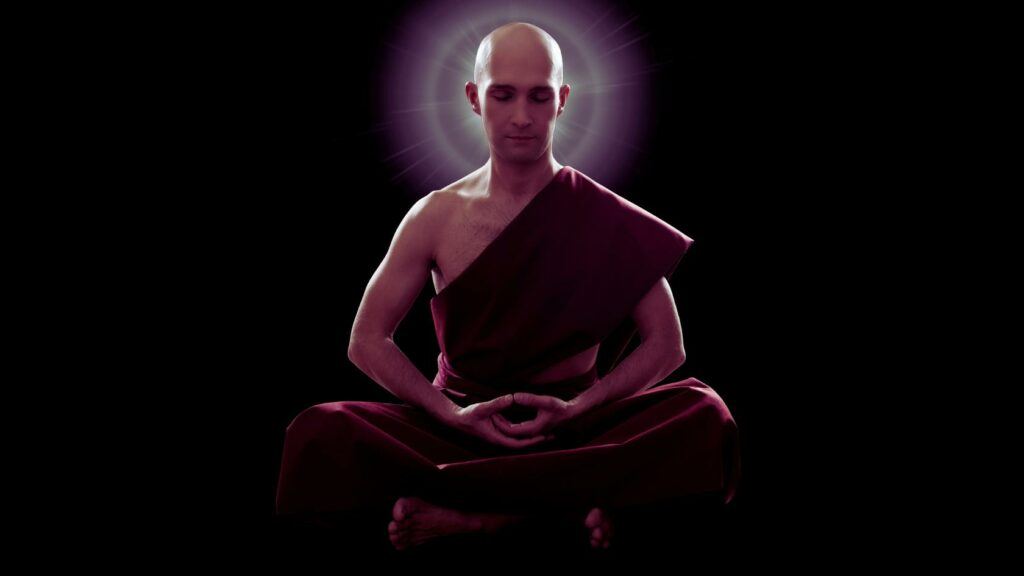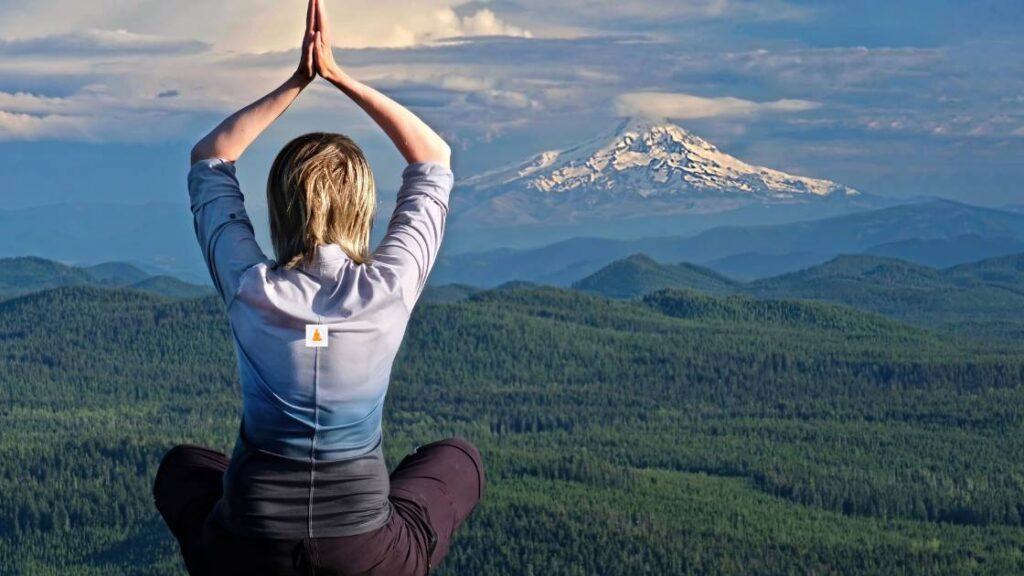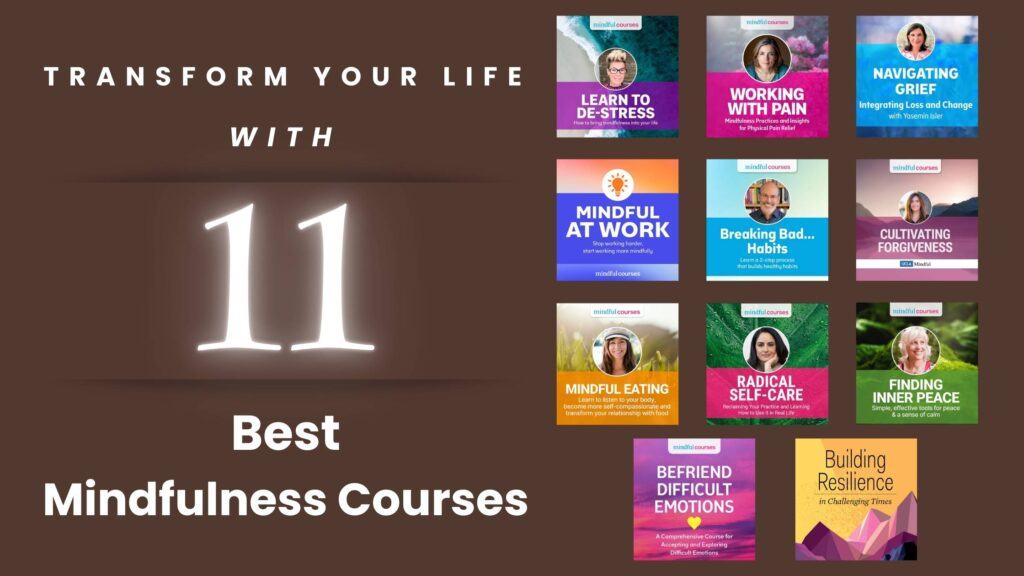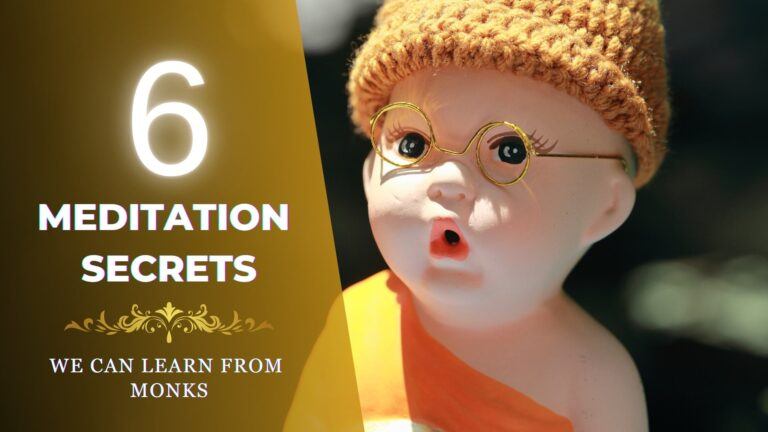What do monks know about the mind that most of us don’t? While many people struggle to sit still or quiet their thoughts, monks seem to radiate calm and clarity. The truth is, they follow time-tested practices that help them stay grounded, focused, and at peace. In this post, we’ll explore six powerful meditation secrets we can learn from monks and how you can apply these simple yet profound techniques to your own life.
1. Simplicity is the Gateway to Stillness
Monks live with very little, not because they have to, but because it helps them stay calm and focused. A simple life makes it easier to quiet the mind.
Clear your space, clear your mind
Monks often live in bare rooms with just the basics. Why? Because too much stuff creates distraction. You don’t need to live like a monk, but you can make your meditation space clean and quiet. A clear space helps the mind settle more easily.
You don’t need special tools
Many people wait to meditate until they have the right cushion, music, or incense. But monks remind us that none of this is necessary. All you need is your body, your breath, and a little time. Start with what you have.
Let go of the need to “do it right”
Perfectionism can make meditation harder than it needs to be. Monks focus on being present, not being perfect. You don’t need to sit for a long time or feel peaceful right away. Just showing up with an open mind is enough.
Simplicity brings focus
When you remove extra noise, both around you and inside you, it’s easier to stay focused during meditation. Try doing one thing at a time. Turn off your phone. Sit in stillness. Let your mind slow down.
2. Consistency Beats Intensity
Monks don’t meditate once in a while, they do it every day. It’s not about how long you sit. It’s about how often you show up.
Daily practice matters more than long sessions
Many people try to meditate for 30 minutes one day, then skip the rest of the week. But this doesn’t help much. Monks build strong habits by practicing every day, even if it’s just for a few minutes. A short, steady practice is more powerful than a long, random one.
Think of meditation like brushing your teeth
You don’t wait until your teeth feel dirty, you brush them every day. Meditation is mental hygiene. It keeps your mind clear and helps you handle stress better. Doing it daily keeps your practice alive.
Make it part of your routine
Monks meditate at the same time each day. This creates a rhythm the mind gets used to. You can do the same. Try meditating after waking up or before bed. Tie it to something you already do, like making tea or brushing your teeth.
Show up, even when you don’t feel like it
Some days will feel easier than others. That’s normal. Monks don’t wait to feel motivated, they just sit. The more you practice, the easier it becomes to show up, no matter how you feel.

How To Meditate Like a Monk
If the idea of meditating like a monk has sparked your curiosity, don’t stop here. From preparing your space and body to finding your personal mantra, there’s a whole mindful blueprint waiting for you.
Discover the exact steps monks use to create a deeply peaceful, purposeful meditation practice. No mountaintop retreat required.
3. The Breath is a Powerful Anchor
Monks often return to the breath during meditation. It helps them stay grounded and present, even when the mind wanders.
The breath is always with you
You don’t need anything special to focus on your breath. It’s with you wherever you go. That’s why monks use it as a steady anchor. It brings the attention back to the here and now.
Watching the breath calms the mind
When you focus on the breath, the mind begins to slow down. You feel less caught up in thoughts or stress. This is because the breath connects directly to your nervous system. Slower breathing leads to a calmer body and mind.
Don’t try to control it
Monks don’t force the breath. They simply notice it. You can do the same. Just observe how the breath moves in and out. Feel it at the nose, chest, or belly. Let it be natural.
Gently return when distracted
It’s normal for your mind to wander. When it does, don’t get upset. Just notice it, and come back to the breath. This gentle returning is the heart of the practice. Every return builds focus and patience.
4. Mindfulness isn’t Just for the Cushion
For monks, mindfulness isn’t something they do once a day, it’s part of everything they do. Meditation continues even after they stand up.
Be present in everyday activities
Monks bring full attention to simple tasks like walking, eating, or washing dishes. You can do this too. Try to notice the feeling of the water when washing your hands. Or the taste and texture of each bite when you eat.
Small moments matter
You don’t need extra time to be mindful. You just need to slow down and pay attention. Waiting in line or brushing your teeth can become a chance to practice awareness.
Build a habit of pausing
Monks often pause before speaking or acting. It helps them respond with care instead of reacting on impulse. You can try this by taking one deep breath before replying to someone or before switching tasks.
Mindfulness creates a stable mind
When you stay present through the day, your mind becomes more steady and calm. You’ll also notice more joy in simple things. Monks teach us that mindfulness isn’t about escaping life, it’s about being fully in it.

What is Mindfulness in Buddhism
Mindfulness in Buddhism isn’t just about relaxing, it’s about awakening. Let’s go deeper into the Buddhist mindfulness, and how it leads not just to calm but to true insight and liberation.
Discover the Purpose and Power of Mindfulness in Buddhism and find the true meaning of mindfulness that can transform your life from the inside out.
5. Silence Speaks Volumes
Monks spend a lot of time in silence. Not just to avoid noise, but to listen more deeply to themselves and the world around them.
Silence is more than quiet
Silence doesn’t just mean turning off sound. It means creating space, for thoughts to settle and for awareness to grow. In silence, you begin to notice things you normally miss.
Insight comes from stillness
When there’s less noise, both inside and outside, the mind can see more clearly. That’s why monks often go on silent retreats. With no talking or distractions, they connect deeply with their inner world.
Try short moments of silence
You don’t need a retreat to enjoy silence. Try sitting quietly for five minutes each day. No phone, no talking, no music. Just breathe and notice what’s present.
Make room for quiet in daily life
Turn off background noise when doing simple tasks like eating or walking. Notice how your mind feels in that quiet. Monks use silence as a tool for clarity, you can too, even in small ways.
6. Discomfort is Part of the Journey
Monks don’t expect every meditation to feel easy. They learn to sit with whatever comes, discomfort included.
It’s normal to feel restless or bored
You might feel tired, stiff, or even annoyed while meditating. This doesn’t mean you’re doing it wrong. These feelings are part of the process. Monks experience them too, they just don’t run from them.
Don’t fight the discomfort
When something feels uncomfortable, most people try to fix it or avoid it. Monks do the opposite. They stay still and observe. This teaches the mind not to react so quickly to pain, boredom, or strong emotions.
Notice the feeling, then let it pass
Instead of pushing discomfort away, try to notice it with curiosity. Ask yourself, “What does this feel like?” Often, the feeling will pass on its own. When you stop resisting, the mind becomes more calm and open.
Discomfort helps you grow
Every time you sit with something hard, you build strength inside. Monks know this is how real growth happens. Over time, you’ll find it easier to stay centered, even when life feels difficult.
Final Thoughts
Monks don’t meditate to escape the world. They meditate to meet it with clarity, patience, and peace. The meditation secrets we can learn from monks aren’t hidden or complex. They’re simple truths: live simply, practice daily, return to the breath, sit with discomfort, stay present in daily life, and make space for silence.
You don’t need to become a monk to benefit from these teachings. Just start where you are. Even small changes in how you sit, breathe, and notice can lead to a calmer, more mindful life.

Still Not Sure Where To Start?
Whether you’re working through big emotions or simply trying to find more calm in your day, these mindfulness courses offer something for everyone.
We recommend beginning with the course that resonates with your current challenge, whether it’s emotional overwhelm, workplace stress, or self-compassion.

